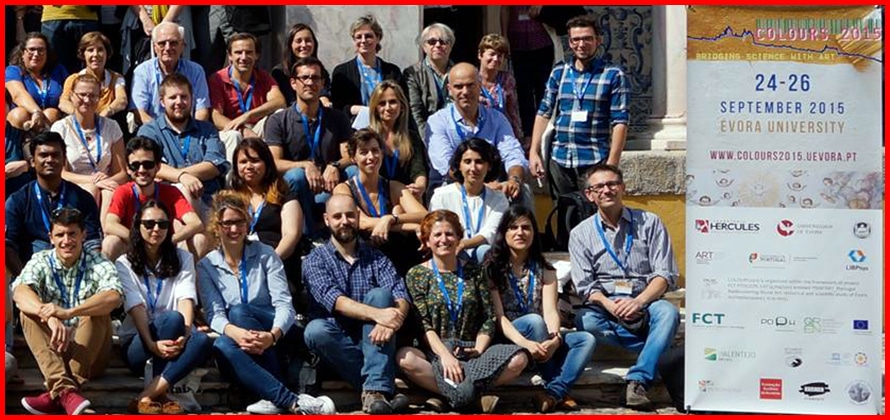
CHSOS just came back from Colours 2015 in Evora, Portugal.
We gave a Plenary lecture “Innovative and Sustainable Technical Art Examination and Color Documentation”.
Thanks to the organizers, and in particular to Milene Gil, Antonio Candeias and the HERCULES lab team, for this event in beautiful Evora.
Scientific examination and documentation of art is expensive. The most important and recognizable works of art from prestigious museums get extensive scientific studies, unfeasible for the vast majority of cultural heritage objects, existing in local communities since they lack comparable financial resources. Typically larger museums have budgets sufficient for scientific departments equipped with cutting-edge technologies. In contrast, small to medium sized cultural institutions have relatively limited access to the same science and technology.
Colours 2015 Book of AbstractsWatch our Plenary Lecture
We presented our new Pigments Checker V.2 which includes our Multispectral Imaging Calibration Card.
Cultural Heritage Science Open Source (CHSOS) was launched in 2012 to bridge this technological divide, to develop and disseminate affordable and sustainable methodologies for art examination that can reach a much larger audience of cultural institutions. CHSOS disseminates methods for art examination in three significant ways, focusing specifically on the low-cost technical solutions: its popular blog, publications and training programs. The CHSOS blog has attracted a growing network of art conservation professionals interested in introducing Cultural Heritage Science concepts into their workflow.
CHSOS has developed and disseminated low-cost technical solutions for panoramic infrared reflectography, technical photography, reflectance transformation imaging and reflectance spectroscopy. This paper discusses the development of a low-cost multispectral imaging system for art and archaeology realized thanks to the first ever crowdfunding project in art conservation science.










